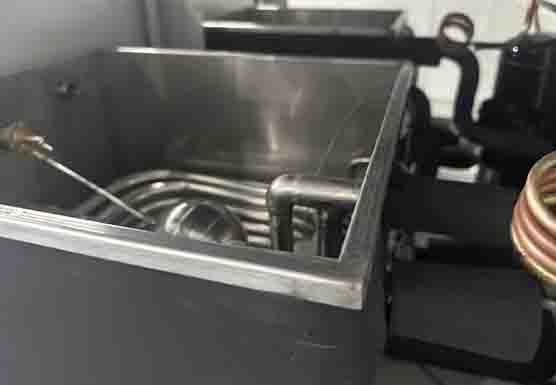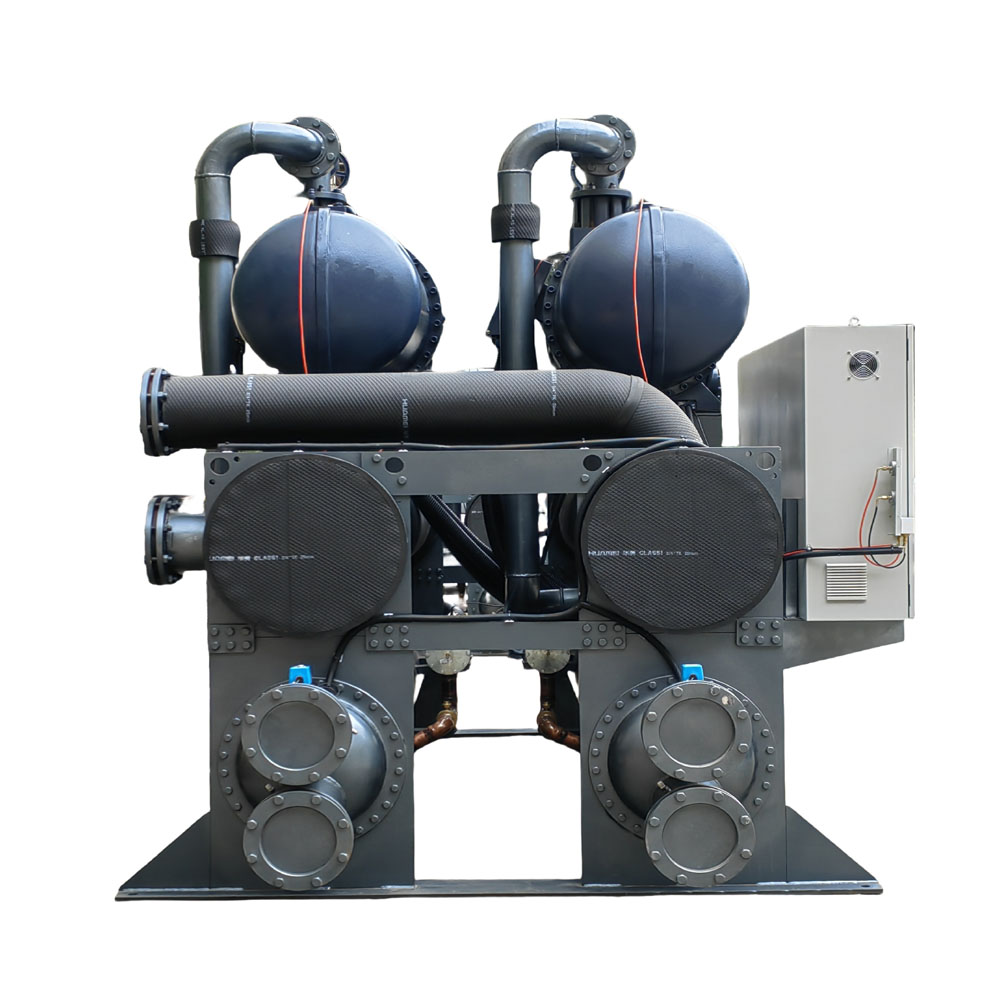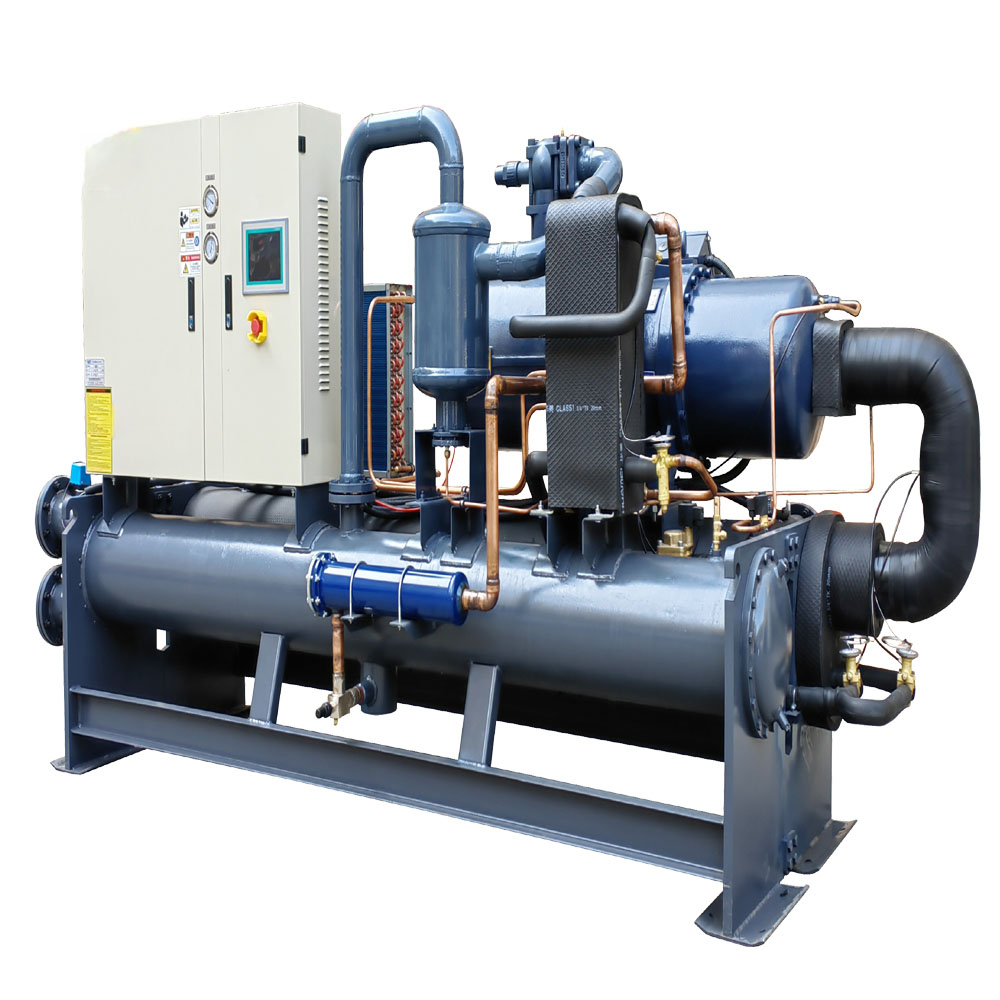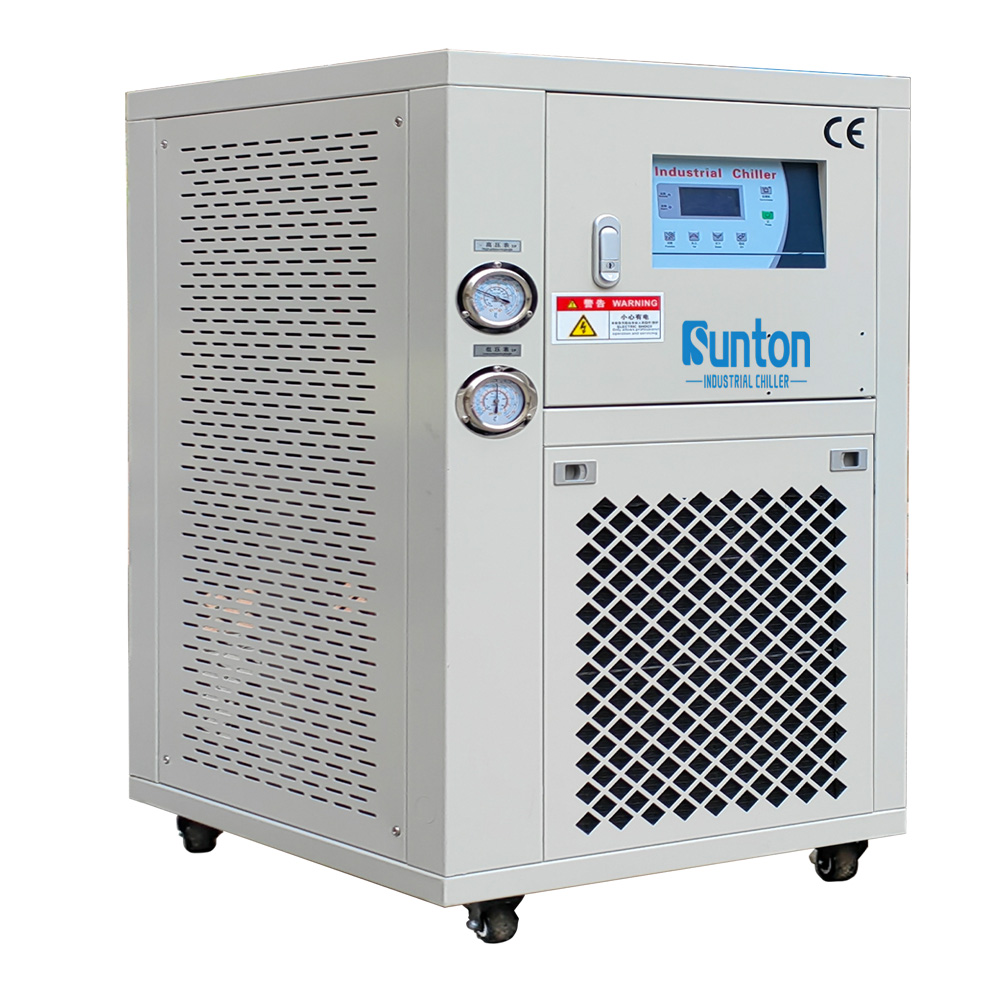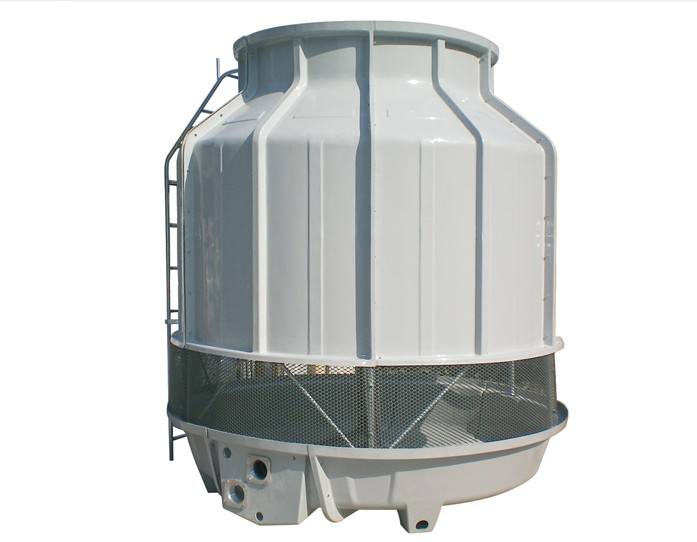-
Dalingshan Industrial Guangdong
Thermoelectric Cooling: Revolutionizing Thermal Management in Semiconduct.
The thermoelectric module consists of n and p-type semiconductors working together. can operate in reverse, functioning as a generator or cooler.s
Thermoelectric cooling is a rapidly evolving technology with profound implications for the semiconductor industry. This article delves into the principles of thermoelectric cooling, explores its advantages in semiconductor applications, and examines how it enhances thermal management and performance. Understanding these cooling systems can be a game-changer for optimizing semiconductor manufacturing processes and product reliability. So, if you’re looking to improve your semiconductor operations, read on!
Article Outline
Inhoudsopgave
What is Thermoelectric Cooling and How Does it Work?
Thermoelectric cooling, also known as Peltier cooling, is a solid-state cooling technology that utilizes the Peltier effect to transfer heat. A thermoelectric cooler (module) is a semiconductor device that pumps thermal energy from one side to the other when an electric current flows through it. This creates a hot and cold side. Thermoelectric devices such as these have seen a surge in cooling applications and the trend is expected to grow rapidly.
Think of it like a tiny The refrigerator utilizes a thermoelectric module for efficient heating and cooling. with no moving parts or liquid refrigerant. The module consists of two ceramic plates with an array of P-type and N-type semiconductor materials sandwiched between them. When a DC voltage is applied, electrons within the module carry thermal energy away from the cold side transferring it to the hot side. This process uses the unique properties of semiconductor material to create a temperature difference across the module.
In simple terms, the side you want to cool gets cold, and the opposite side gets hot – the heat is moved away from where you don’t want it! This cooling effect happens thanks to something called the Peltier effect. When direct current flows through the junction of two dissimilar conductors in a thermoelectric module, heat is absorbed or generated. This makes it a fantastic cooling system for precise temperature control.
Advantages of Thermoelectric Coolers in Semiconductor Applications
Thermoelectric coolers offer several advantages for semiconductor applications:
- Precise Temperature Control: TECs allow for very accurate temperature controlThermoelectric devices can regulate temperature, sometimes to within fractions of a degree, using the principles of heating and cooling. This precise temperature control is essential in many semiconductor processes.
- Compact Size: Thermoelectric modules are small and lightweight, making them ideal for applications where space is limited.
- No Moving Parts: The absence of moving parts increases reliability and reduces maintenance requirements. This solid-state cooling system eliminates the need for noisy compressors or fans found in other cooling methods, ensuring quiet operation in environments like cleanrooms where noise control is important.
- Fast Response Time: TECs can quickly achieve the desired temperature setpoint, enabling rapid thermal cycling if required.
- Cooling and Heating: Thermoelectric modules can also be used for heating by reversing the The direction of electric current influences the Seebeck effect in thermoelectric devices., offering versatile thermal management solutions.
The lack of moving parts or liquid refrigerant also makes thermoelectric coolers environmentally friendly, and their ability to provide both cooling and heating makes them ideal for precise temperature stabilization in semiconductor applications. Thermoelectric modules also require less maintenance compared to conventional systems due to the absence of moving parts.
Thermoelectric Modules: The Building Blocks of Cooling Systems
A thermoelectric module is the core component of a thermoelectric cooling system. These modules are typically made of bismuth telluride, a semiconductor material with excellent thermoelectric properties. A standard thermoelectric module consists of multiple thermocouples (P-type and N-type semiconductor elements) connected electrically in series and thermally in parallel between two ceramic plates. Cooling Tower provide cooling for industrial chillers that rely on conventional refrigerants. However, for localized and precise cooling, thermoelectric coolers or TECs are preferred. These modules contain multiple semiconductor pellets connected between two ceramic plates, allowing for a larger delta T (temperature difference).
These are typically constructed using bismuth telluride and offer superior performance compared to single-stage modules. A single thermoelectric element is called a thermocouple. A standard module consists of several thermocouples connected electrically in series and thermally in parallel between two ceramic plates. This design allows for both cooling and heating capabilities.
Key Parameters of Thermoelectric Modules (Modules)
Several key parameters define the performance of a thermoelectric module:
- Qmax: This parameter describes the maximum cooling capacity (or heat pumping rate) of the module under specific operating conditions. It indicates the maximum amount of heat the module can transfer from the cold side to the hot side.
- ΔTmax: This parameter represents the maximum temperature difference that the module can achieve between the hot and cold side when no heat is being pumped. This value is dependent on the material properties, the number of thermocouples within the module, and the manufacturing process of the thermoelectric device.
- Coefficient of Performance (COP) is crucial for evaluating the efficiency of a te cooler. The coefficient indicates the efficiency of a module and reflects the ratio of cooling power to the supplied electrical power.
- Peltier Coefficient: The Peltier coefficient describes the amount of heat absorbed or released per unit of electric current passing through the junction of two dissimilar conductors.
- Electrical Resistance: Electrical resistance refers to how much a material or device resists the flow of electric current. A higher resistance means more energy is lost as heat.
It is also essential to consider the maximum current required by the module and the module’s thermal resistance. Thermoelectric technology offers several benefits over traditional refrigeration systems, notably the ability to precisely control temperature, the absence of moving parts for increased reliability, and the ability to scale down for localized cooling and heating.
Optimizing Thermoelectric Cooling System Performance
Several factors influence the performance of thermoelectric cooling systems:
- Heat Sink Selection: A properly sized heat sink is crucial for dissipating heat from the hot side of the module. The heat sink should have sufficient thermal conductivity and surface area to effectively transfer heat to the ambient environment. Air Cooled Screw Chiller are great for large-scale cooling requirements, but for smaller, precision cooling, the thermoelectric cooler is the ideal choice.
- Module Size and Configuration: Choosing the appropriate module The size and configuration (single-stage or multi-stage) of the te cooler depends on the specific cooling requirements of the application. For many applications a single-stage thermoelectric module might suffice, but for others, a more elaborate multi-stage design could be necessary to achieve desired temperature differentials. Multi-stage modules are basically several single-stage modules stacked on top of each other. This allows for a greater temperature difference. Multi-stage modules can achieve very low temperatures but are more expensive and complex.
- Current and Voltage Control: Precise control of the current and voltage supplied to the module is essential for achieving optimal cooling performance and temperature stability. Supplying too much or too little power can drastically alter its performance and lifespan.
- Thermal Interface Materials: Using high-quality thermal interface materials (TIMs) between the module and the heat sink and between the module and the object being cooled is vital to minimize thermal resistance and maximize heat transfer. This is particularly important as thermoelectric modules are sensitive to how effectively heat flow is managed and dissipated by the heat sink. Heat transfer is an important aspect of maintaining the appropriate temperature. We move heat away from where it’s not wanted, which is why a good heat sink is crucial. The heat sink takes the heat generated by the thermoelectric cooler and spreads it out into the surrounding air. Air Cooled Scroll Water Chiller is ideal for when you need to cool over a larger area.
By carefully considering these factors, you can maximize the cooling efficiency of your thermoelectric cooling system. You can have Glycol chillers or thermoelectric coolers depending upon your specific cooling needs.
Applications of Thermoelectric Coolers in Semiconductors
Thermoelectric coolers find a wide range of applications in the semiconductor industry, including:
- Semiconductor Manufacturing Equipment: Precise temperature control is essential during wafer fabrication, chip packaging, and testing. Thermoelectric cooling modules can maintain stable temperatures for these processes.
- Laser Diode Cooling: Laser diodes generate a significant amount of heat, which can degrade their performance and lifespan. TECs are used to cool laser diodes and maintain their optimal operating temperature.
- Semiconductor Metrology: Thermoelectric coolers provide temperature stability for sensitive metrology equipment used to inspect and measure semiconductor wafers. Chillers for semiconductor metrology require especially stringent specifications.
- Thermal Cycling and Testing: Thermoelectric modules are used to create rapid thermal cycles for testing semiconductor devices under different temperature conditions.
- Spot Cooling: Thermoelectric coolers provide spot cooling for specific components or areas within a larger semiconductor system, which is critical for sensitive areas that require precise thermal management. Thermoelectric cooling modules play a crucial role in such applications. Anti-Explosion Chillers provide cooling for special applications.
Precise temperature regulation is essential in the semiconductor industry for various processes like wafer testing, calibration, laser diode stabilization, and precise component cooling within larger systems. These modules are specifically designed for spot cooling applications in a variety of semiconductor processes. For larger applications you can consider Water Cooled Screw Central Chillers.
Comparing Thermoelectric Cooling with Other Cooling Methods
Thermoelectric cooling offers distinct advantages over other cooling methods, like traditional compressor-based refrigeration and liquid cooling, in certain applications. Liquid cooling, while effective, often involves complexities such as pumps, tubing, and potentially leaky seals, which can cause maintenance issues. Air cooling using fans is another common method but struggles to achieve the precise temperature control offered by thermoelectric cooling. Low Temperature Chiller Cooling Solutions | Advanced Chill Technologies offers more information about alternative cooling methods.
| Feature | Thermoelectric Cooling | Compressor-Based Refrigeration | Liquid Cooling | Air Cooling |
| Temperature Control | Precise | Moderate | Good | Moderate |
| Size | Compact | Large | Moderate | Moderate |
| Reliability | High | Moderate | Moderate | High |
| Maintenance | Low | Moderate | Moderate | Low |
| Cost | Moderate | High | High | Low |
| Efficiency | Lower | Higher | Higher | Lower |
Here’s a look at how thermoelectric cooling stacks up against other methods. Thermoelectric cooling and liquid cooling provide better temperature control compared to traditional air cooling methods. Water Cooled Screw Water Chiller is a good choice for many applications but thermoelectric cooling is superior for localized cooling requiring precision.
Future Trends in Thermoelectric Cooling for Semiconductors
The field of thermoelectric cooling is continuously evolving. Several trends are shaping its future:
- Improved Materials: Researchers are developing new semiconductor materials with higher thermoelectric figures of merit (ZT), leading to more efficient and powerful thermoelectric coolers. Higher ZT values translate to improved cooling performance. Advanced materials like skutterudites and half-Heusler alloys have shown promising potential. These advanced semiconductor materials can make thermoelectric coolers more efficient by increasing the temperature difference they can generate.
- Miniaturization: Smaller and more powerful thermoelectric coolers are being developed for use in increasingly miniaturized semiconductor devices. The push towards integrating thermoelectrics directly into chips is gaining momentum, paving the way for on-chip thermal management solutions that maintain the necessary junction temperatures for peak performance.
- Integration with Other Technologies: Thermoelectric cooling is being integrated with other technologies, such as microfluidics and photonics, to create innovative cooling solutions for advanced semiconductor applications. This could involve incorporating microfluidic channels alongside thermoelectric coolers to enhance heat dissipation.
- Multi-Stage Modules: Multi-stage thermoelectric coolers are gaining popularity due to their capability to create greater temperature differences (ΔT) compared to single-stage devices. This means they can achieve significantly lower temperatures, further expanding the application possibilities of thermoelectric technology.
- Advanced Manufacturing Techniques: Advancements in manufacturing technologies are enabling the mass production of thermoelectric modules with improved performance and lower costs. Improved manufacturing processes are reducing the cost of ownership associated with TE technology.
These ongoing advancements are making thermoelectric cooling technology even more impactful for demanding semiconductor applications.
Choosing the Right Thermoelectric Cooler for Your Needs
Choosing the right thermoelectric cooler involves carefully balancing factors such as cooling capacity (Qmax), temperature difference (ΔTmax), operating temperature, and physical size. If the goal is maintaining precise temperature control for small components or areas, a thermoelectric cooler is the way to go. If your application requires cooling below ambient temperature, then you’ll need a thermoelectric cooler.
Here are a few considerations for selecting an appropriate thermoelectric cooler for various semiconductor cooling needs. Understanding the heat load of the application is essential. Consider whether air cooling or liquid cooling might be more appropriate if the heat load is too significant for a thermoelectric solution.
Consider the temperature range you require as well. Ensure the thermoelectric cooler you choose can achieve the necessary target temperature. Consult with experts if you are uncertain about your requirements. Commercial TE modules come in various sizes and shapes, ranging from small, single-stage devices to large, multi-stage assemblies. You’ll need to choose a module that physically fits into your design. You’ll also need to account for mounting the module correctly and ensuring adequate airflow or liquid cooling for proper heat dissipation.
Remember that the hot side temperature is always higher than the cold side temperature. Consider the expected ambient temperature of the environment. A larger temperature difference between the hot and cold sides requires a more powerful and possibly multi-stage TEC.
Maintaining and Troubleshooting Your Thermoelectric Cooling System
Thermoelectric coolers require minimal maintenance, but here are a few tips:
- Cleanliness: Keep the cooling plates and the heat sink clean and free of dust and debris to ensure optimal heat dissipation.
- Proper Mounting of the Peltier cooler: Ensure that the thermoelectric cooler is mounted correctly and securely with appropriate thermal interface materials.
- Current Control: Do not exceed the maximum current rating of the thermoelectric cooler to avoid damage.
- Overheating Protection: Implement appropriate overheating protection measures to prevent damage to the thermoelectric cooler.
Here are some common troubleshooting tips for your thermoelectric cooling system:
- No Cooling: Verify the power supply and polarity. Check for a blown fuse or faulty wiring. Ensure the module is correctly wired with the proper polarity (+ and -). Check for sufficient heat sinking. A poorly designed heat sink restricts the thermoelectric module’s ability to reject heat, leading to diminished cooling performance. Cooling Tower are often used in conjunction with chillers that use traditional refrigerants. Thermoelectric coolers require less infrastructure.
- Reduced Cooling Performance: Check the thermal paste/interface between the thermoelectric cooler, object, and heat sink. Make sure there is good contact for efficient heat flow. Inadequate TIMs can hinder heat transfer.
- Condensation: If condensation is a concern, ensure adequate sealing and consider using a desiccant.
With proper maintenance and timely troubleshooting, your thermoelectric cooling system can function optimally for years. By carefully considering these factors, you can maximize the cooling efficiency of your thermoelectric cooling system.
FAQs:
How does a thermoelectric cooler differ from a conventional refrigeration system?
Unlike conventional refrigeration systems that use refrigerants and compressors, thermoelectric coolers (TECs) are solid-state devices that rely on the Peltier effect to transfer heat. This means no moving parts, making them more reliable and compact. Conventional systems rely on the vapor-compression cycle, which involves liquid refrigerant, compressors, and expansion valves.
How does a thermoelectric cooler differ from a conventional refrigeration system?
Unlike conventional refrigeration systems that use refrigerants and compressors, thermoelectric coolers (TECs) are solid-state devices that rely on the Peltier effect to transfer heat. This means no moving parts, making them more reliable and compact. Conventional systems rely on the vapor-compression cycle, which involves liquid refrigerant, compressors, and expansion valves.
What are the key parameters to consider when selecting a thermoelectric module?
How does a thermoelectric cooler differ from a conventional refrigeration system?
Unlike conventional refrigeration systems that use refrigerants and compressors, thermoelectric coolers (TECs) are solid-state devices that rely on the Peltier effect to transfer heat. This means no moving parts, making them more reliable and compact. Conventional systems rely on the vapor-compression cycle, which involves liquid refrigerant, compressors, and expansion valves.
What are some common applications of thermoelectric coolers in the semiconductor industry?
Common applications include cooling semiconductor manufacturing equipment, laser diode cooling, semiconductor metrology, thermal cycling and testing, and spot cooling of electronic components. The precise temperature control afforded by thermoelectric cooling is essential in these applications. They are frequently used in semiconductor cooling applications.
In Conclusion:
- Thermoelectric coolers are solid-state devices: They leverage the Peltier effect, using semiconductor materials to pump heat when electric current is applied, offering a distinct advantage over conventional methods.
- Precise temperature control is a key strength: Thermoelectric coolers excel at maintaining specific temperatures, sometimes to within fractions of a degree, crucial for sensitive semiconductor processes.
- Size and reliability are significant benefits: Their compact form factor and lack of moving parts makes them ideal for applications where space is limited and reliability is paramount. Thermoelectric cooling eliminates the need for liquid refrigerant and compressors, increasing the system’s overall lifespan.
- Versatility for cooling and heating: The same thermoelectric module can both cool and heat by simply reversing the direction of the direct current, simplifying thermal management design.
- Semiconductor applications are numerous: From manufacturing equipment to laser diode cooling, thermoelectric coolers play a critical role in numerous aspects of the semiconductor industry.
- Future trends point to further advancements: Ongoing research in new materials and miniaturization promise to make thermoelectric cooling even more effective and versatile for future semiconductor technologies.
By understanding and utilizing thermoelectric cooling, the semiconductor industry can achieve greater precision, reliability, and efficiency in its manufacturing and testing processes, driving forward technological advancements in various sectors.
Remember, the ideal cooling solution depends on your specific needs. While thermoelectric coolers excel in certain areas, traditional Water Cooled Scroll Water Chiller or Water Cooled Screw Water Chiller might be better suited for other applications. Consider all your options and consult with experts to determine the best fit for your specific semiconductor application.



